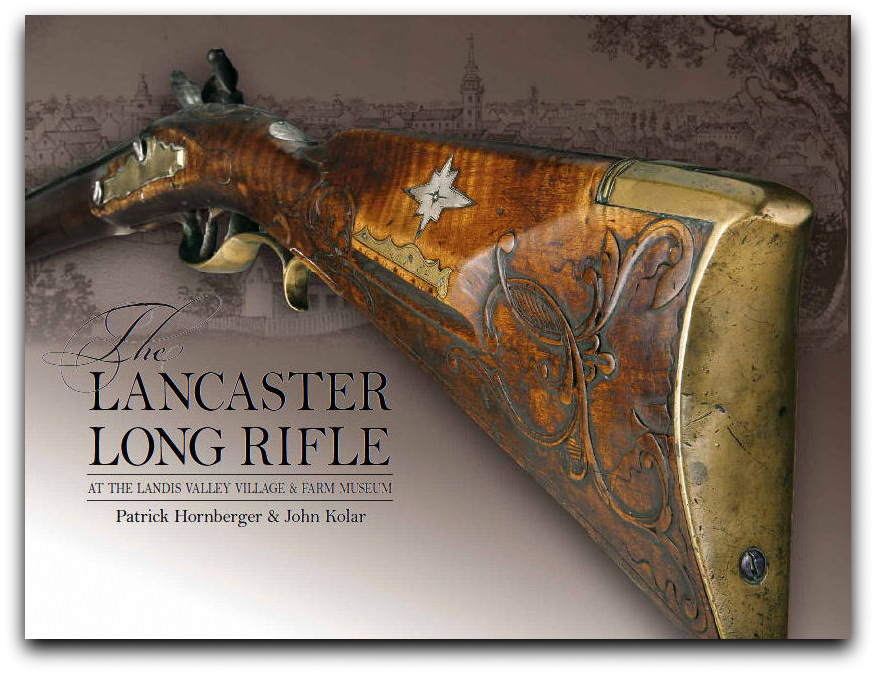I am interested in hearing your educated opinions on what rifles would have been used by this "Active militia" unit in the early 1830s or any frontiersman in the Arkansas/Oklahoma area at that time, even Jesse Chisolm and his Cherokee brethren who made forays into the plains and cross timbers market hunting. Would we see 1807 contract rifles, Dickert rifles, Trade rifles from various makers? What calibers would be common at that time? How rare would a French fusil be in this part of old Louisiana by then?
The Rangers undoubtedly brought their own rifles. This was probably a mixed lot. This part of Arkansas/Oklahoma was about midway between New Orleans and St. Louis and was supplied by both. There were a few gun makers in both locations, but the volume of rifles came from the East through those trade centers.
Dickert rifles could have been brought to the West by settlers and adventurers from Kentucky and surrounding areas. Jacob Dickert was active in gun making into the first decade of the 19th century and likely in partnership with his grandsons, Jacob Dickert Gill and Benjamin Gill, continued in the business through the 1810s. He passed away in 1822.
Jacob Dickert Gill and brother Benjamin continued making rifles, many of which found there way to the West. Both are known to have provided trade rifles for western merchants and fur companies such as the American Fur Company.
B. D. Gill Rifle Showing Frontier Use
Other Lancaster gunsmiths also made rifles for the trade. Some of these were Christopher Gumpf, Peter Gonter, John Guest, Peter Brong, and Henry Gibbs. There were other gunsmiths from York Co. and Philadelphia as well as New York that made rifles for the trade.
The 1807 Contract Rifles appear to have remained at the Schuylkill Arsenal until the out break of the War of 1812 when they were likely distributed out to various depots. Some may have found their way to the frontier after the War of 1812. They weren't returned to any of the arsenals, so they were used up during the war, remained with state militias, or taken home by soldiers when they were mustered out.
I agree with the previous posts about the Henry Deringer trade rifles. Deringer received his first contract to make Indian rifles in 1809. He quickly became the main supplier to the Office of Indian Trade for trade and treaty rifles. Many of his rifles were sent to the US trading posts, called factories. These were set up to trade with the Indians, but whites also traded there. Below is a map showing locations of the factories in the southern territories and their years of operation.
Note that three were located in present day Arkansas--Sulphur Fork, Spadra Bluffs, and Arkansas Post. The Chickasaw Bluffs factory was just across the Mississippi from Arkansas.
The Factory System was disbanded by Congress in 1822. Remaining inventory was often auctioned off. Deringer continued to receive orders from the government for Indian rifles, though. The largest orders were for the Indians being relocated from the South to Indian Territory (eastern half of present day Oklahoma). Therefore, a large number of Deringer trade rifles were to be found in Oklahoma in the 1830s.
It's probably worth noting that the most prominent traders in the Oklahoma/Arkansas area in the time period you are interested in were the Chouteaus of St. Louis. Pierre Chouteau established a trading post in the Three Forks Area of Indian Territory in the late 1790s. One of his sons, Auguste Pierre Chouteau, went to the Three Forks Area in 1817 to manage the trade there. He remained in the area until his death in 1838 at Fort Gibson. A. P. Chouteau would have brought about the same type of rifle to Three Forks as his father and brother were trading out of St. Louis.
By the 1830s, a French fusil would have been pretty rare. The French relinquished their territory in North America in 1763. There were still a lot of French traders on the Mississippi River, the Ohio River, and their tributaries that operated independent of the British for several decades. They received trade goods through the Spanish controlled New Orleans. Some French trade guns could have been imported through there for customers that preferred them over English trade guns.
The British, and after the Rev War, the Americans, gradually gained more control over the Ohio River country and the territory east of the Mississippi. Finally with the Louisiana Purchase, the US gained full control over New Orleans and the Mississippi River Valley. So there would have been a gradual decline in French made trade goods coming up the Red and Arkansas Rivers from 1763 to 1800 and complete shutoff after 1803. It's not likely that a French trade gun would have lasted 70 to 30 active years on the frontier and still be in working order in the 1830s.
Looking at records of orders for rifles that the American Fur Company placed with J. Joseph Henry and James Henry, the most common caliber of trade rifle was between 32 and 40 balls to the pound or equivalent to .54 and .50 caliber. Two thirds of the orders were for 32 balls to the pound or .54 caliber. This was probably the range of popular calibers for the frontier as it moved west from the Appalachian Mountains.
Deringer Trade Rifle by Jack Brooks










